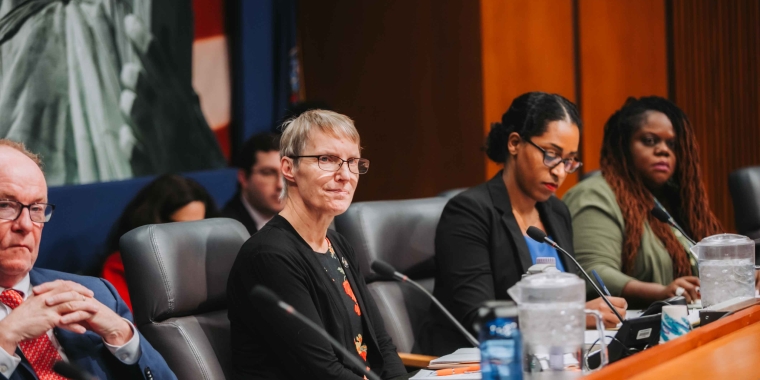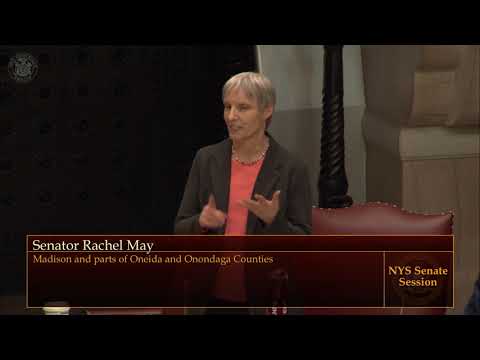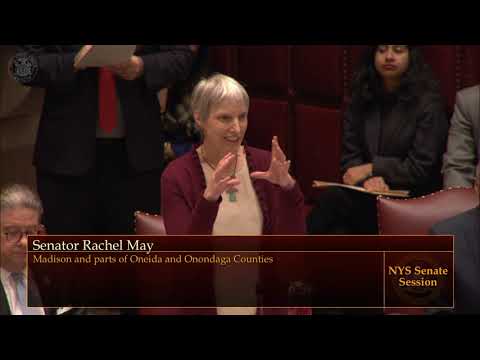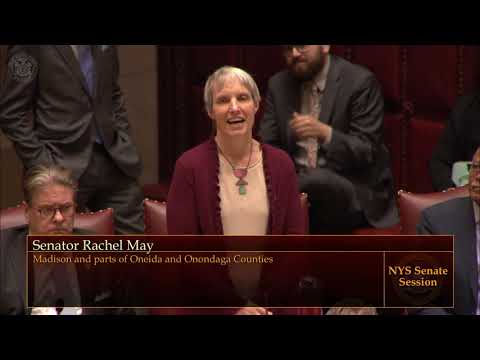Report by Cities 2 Chair Senator Rachel May sheds light on poverty in New York’s Upstate cities
Dan Messineo
April 12, 2024
-
COMMITTEE:
- Cities 2

Senator May listens to witnesses at the Senate Standing Committee on Cities 2 hearing on poverty.
(Syracuse, NY) Senator Rachel May (Syracuse, Cayuga County) has released a report on poverty in Upstate cities. As the chair of the Senate Standing Committee on Cities 2, Senator May conducted a hearing in early December 2023, during which several stakeholders, whose insights formed the basis of this report, shared their views on poverty and ways to tackle it. The report summarizes the findings of the hearing and proposes policy recommendations to improve the situation.
“Poverty is a pressing issue in Upstate cities, and we must take swift action to address it. During my hearing, we heard from various stakeholders involved in the fight against poverty, and we identified some causes, such as inadequate housing and lack of education, and explored potential policy solutions. I intend to share the knowledge I gained with my colleagues in the Senate Majority to develop effective policies to address the urgent issue of poverty,” said Senator Rachel May.
Report highlights include:
In 2023, a list of cities with the highest child poverty rates included three cities in upstate New York: Syracuse at #2, Rochester at #5, and Buffalo at #7. Even smaller cities like Binghamton and Utica are grappling with alarming poverty rates. Poverty tends to concentrate in specific neighborhoods in each town, posing a significant threat to economic growth, educational outcomes, and the overall quality of life. Access to employment, lack of essential resources, and housing are a few of the issues that contribute significantly to poverty across New York.
Employment: Access to employment is a significant determinant of poverty. Aqua Porter, the Executive Director of the Rochester-Monroe Anti-Poverty Initiative, testified at the hearing that employment discrimination and inadequate access to education and training programs contribute to unemployment. It's crucial to prioritize equal access to education, training, and employment to break the cycle of poverty and empower individuals to thrive.
Essential resources: Community organizations are overwhelmed and unable to meet the needs of all community members due to various reasons such as legal status, transportation issues, and lack of awareness. Rev. Myra Brown highlighted the impact of fines and fees on impoverished individuals, perpetuating a cycle of ever-increasing penalties for non-payment, further increasing vulnerability in employment, education, and housing.
Housing: Income disparities, high cost of living, and increasing mortgage rates are among the obstacles to housing stability, according to Nick Coulter, Co-Founder of Person-Centered Housing Options. He specifically mentioned the low funding levels for individuals with Temporary Assistance for Needy Families (TANF) and absentee landlords who siphon wealth out of residents. Jason Mays, Executive Director of the Hudson Valley Justice Center, added that multinational private equity firms are among the absentee landlords, predicted to hold over 40% of all single-family rentals by 2030.
Numerous witnesses testified at the hearing, suggesting several policy interventions. The proposed solutions included expanded tax credits and continued financial support to families. Many of them highlighted the positive effects of the tax credit system in relieving poverty and improving families’ financial status, especially regarding childcare, food, clothing, and other essentials. While this summary is not exhaustive, it aims to provide a picture of the possible solutions that New York State can implement.
Share this Article or Press Release
Newsroom
Go to NewsroomSenator May Floor Speech on Green Development Program
April 2, 2019

Senator May Floor Speech on Plastic Bag Ban
April 1, 2019

Senator May Floor Speech on Aging Budget
April 1, 2019

